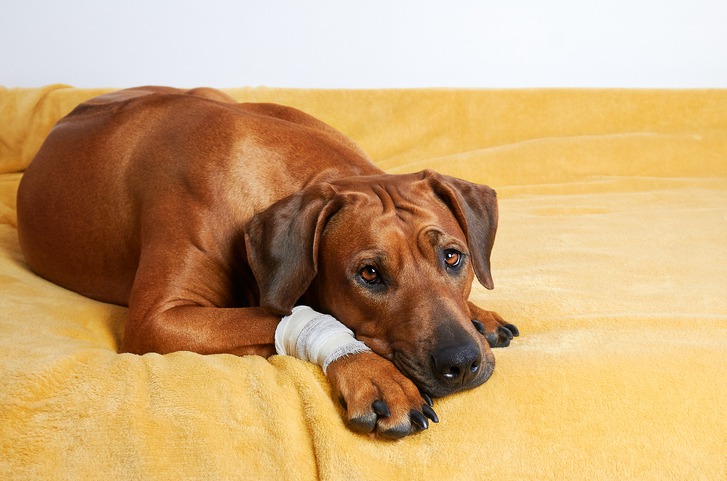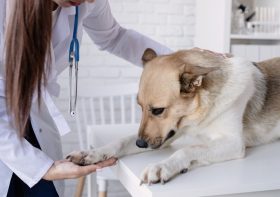How Do I Care for My Pet After a Surgery?

Taking care of your pet after surgery can be stressful, especially if you’re not sure what to expect. Understanding the basic principles of post-surgery care can ease your worries and help your pet recover faster. In this article, we’ll guide you through everything you need to know to ensure your pet’s comfortable and speedy recovery.
Immediate Post-Surgery Care
Once your pet comes home after surgery, your primary concern is keeping them comfortable and helping them manage pain. Ensuring that they have a quiet, comfortable place to rest is crucial. Limiting activity will prevent them from overexerting themselves or risking injury to the surgical site.
Monitoring your pet for unusual symptoms is essential. Watch for redness, swelling, or discharge from the incision. If you notice any of these signs, contact your vet immediately. Additionally, keep an eye on their overall demeanor. Lethargy, loss of appetite, and unexpected pain can indicate complications.
Pain Management
Your vet will likely provide pain medications for your pet. Follow the dosage instructions carefully to manage your pet’s pain effectively. Never give your pet human medications, as they can be toxic.
Food and Water
It’s common for pets to have a reduced appetite after surgery. Offer small amounts of food and water and monitor their intake. If your pet refuses to eat for more than 48 hours, consult your vet. Bland foods like boiled chicken and rice can be more palatable and easier on their stomach.
Preventing Infection
Keeping the surgical site clean and dry is key to preventing infection. Avoid bathing your pet until the vet clears it. If your pet licks or chews at the incision, you may need to use an Elizabethan collar, also known as a “cone of shame.”
Activity Restrictions
Activity restrictions are important to ensure proper healing. Your vet will provide guidelines on how long your pet should remain inactive. Generally, this involves limiting running, jumping, and rough play. Going for walks on a leash and light activities are usually acceptable.
Confined Area
Create a confined area for your pet to rest comfortably. Use baby gates or playpens to restrict their movement if necessary. This space should be free from any hazards that could injure your recovering pet.
Short Leash Walks
Leashed walks should be kept short and slow. Gradually increase the duration as your pet recovers, and observe them closely for signs of discomfort or fatigue. Monitor the incision site after walks to ensure it remains clean and dry.
Monitoring the Surgical Site
Checking the incision site daily will help you identify any potential issues early. Look for redness, swelling, or discharge and compare it to how it looked initially.
Signs of Infection
Signs of infection include redness, swelling, and discharge with an unusual odor. If you notice any of these symptoms, contact your vet right away. Monitoring your pet’s behavior for increased pain or lethargy is also important.
Keeping It Clean
Follow your vet’s instructions regarding cleaning the incision. If advised, use warm water and a soft cloth to gently clean around the area. Avoid using alcohol or hydrogen peroxide as they can delay healing.
Having a reliable vet makes post-surgical care easier. A trusted veterinarian in Orlando can provide valuable guidance and peace of mind during this critical time. Regular follow-up visits are crucial to ensure your pet’s proper healing and recovery. Consistent care from a reputable vet helps detect any issues early. Follow their advice on wound care, medication, and activity restrictions.
Reintroducing Normal Activities
As your pet starts to recover, you’ll want to slowly reintroduce normal activities. This gradual process is essential to ensure they don’t overexert themselves and risk injury.
Gradual Increase
Begin with light activities and gradually increase the intensity. Start with short leashed walks, then move on to playtime and eventually off-leash activities. Always observe your pet afterward for signs of pain or fatigue.
Vet Check-Up
Your vet will schedule follow-up appointments to monitor your pet’s recovery. These check-ups are crucial for ensuring the wound is healing properly and your pet’s overall health is improving.
Pain Management and Medications
After surgery, pain management is a top priority. Your vet will prescribe medications to manage your pet’s pain and inflammation. Following the prescribed regimen is essential for your pet’s comfort and recovery.
Administering Medications
Follow the vet’s instructions on how to give medications. Some pets may resist, so be gentle but firm. Using treats or pill pockets can help make the process easier. Always complete the full course of antibiotics if prescribed to prevent infection.
Signs of Adverse Reactions
Monitor your pet for any signs of adverse reactions to medications, such as vomiting, diarrhea, or changes in behavior. If you notice any of these symptoms, contact your vet immediately for advice.
In Case of Pet Emergencies
In case of emergencies, knowing where to take your pet can save valuable time and ensure they receive the immediate care they need. Emergencies can happen unexpectedly, and having a plan in place is essential for every pet owner.
Choose a Specialized Emergency Vet
When your pet needs urgent care, choosing a specialized MetroWest Veterinary Clinic emergency vet can be crucial. These professionals provide specialized emergency care tailored to your pet’s specific needs. Features of such clinics may include:
24/7 Availability: Emergency vet clinics offer round-the-clock services to handle urgent health issues at any time of the day or night.
Specialized Equipment: These facilities are typically equipped with the necessary tools and technology to address emergencies effectively.
Keep Contact Information Handy
Having contact information for an emergency vet ensures you’re prepared for any urgent situation. Here are some tips for keeping this information accessible:
Store Numbers in Your Phone: Save the emergency vet clinic’s contact information in your phone and label it clearly for quick access.
Print and Display: Keep a printed list of important contact numbers, including your regular vet and nearby emergency clinics, in a visible location at home.
Access to Emergency Care
Access to emergency care means your pet will get prompt attention, greatly reducing the risk of complications. Quick action is crucial in emergencies, as timely care can make a significant difference in your pet’s outcome.
Recognize Emergency Signs: Familiarize yourself with signs that indicate an emergency, such as difficulty breathing, excessive bleeding, sudden lethargy, or seizures.
Prepare for the Visit: Gather any medical records or important information about your pet before heading to the clinic, which can help the vet provide better care.
Dental Care
General health, including caring for pet dental health, is vital for recovery. Dental issues can cause pain and stress, slowing the healing process. Regular dental check-ups and proper oral care will aid in overall well-being and recovery.
Neglecting dental health can lead to infections that may interfere with recovery. Brush your pet’s teeth regularly and provide dental treats to maintain their oral health. This prevents additional health issues, ensuring a faster and smoother recovery for your pet.
Wrapping Up
Caring for your pet after surgery involves careful attention to their needs. Providing a quiet and comfortable space, managing pain, and monitoring the surgical site are key steps. Regular check-ups with your vet and gradually reintroducing activities will help ensure a smooth recovery. Remember, keeping an eye on your pet and following vet recommendations are essential for their well-being.


